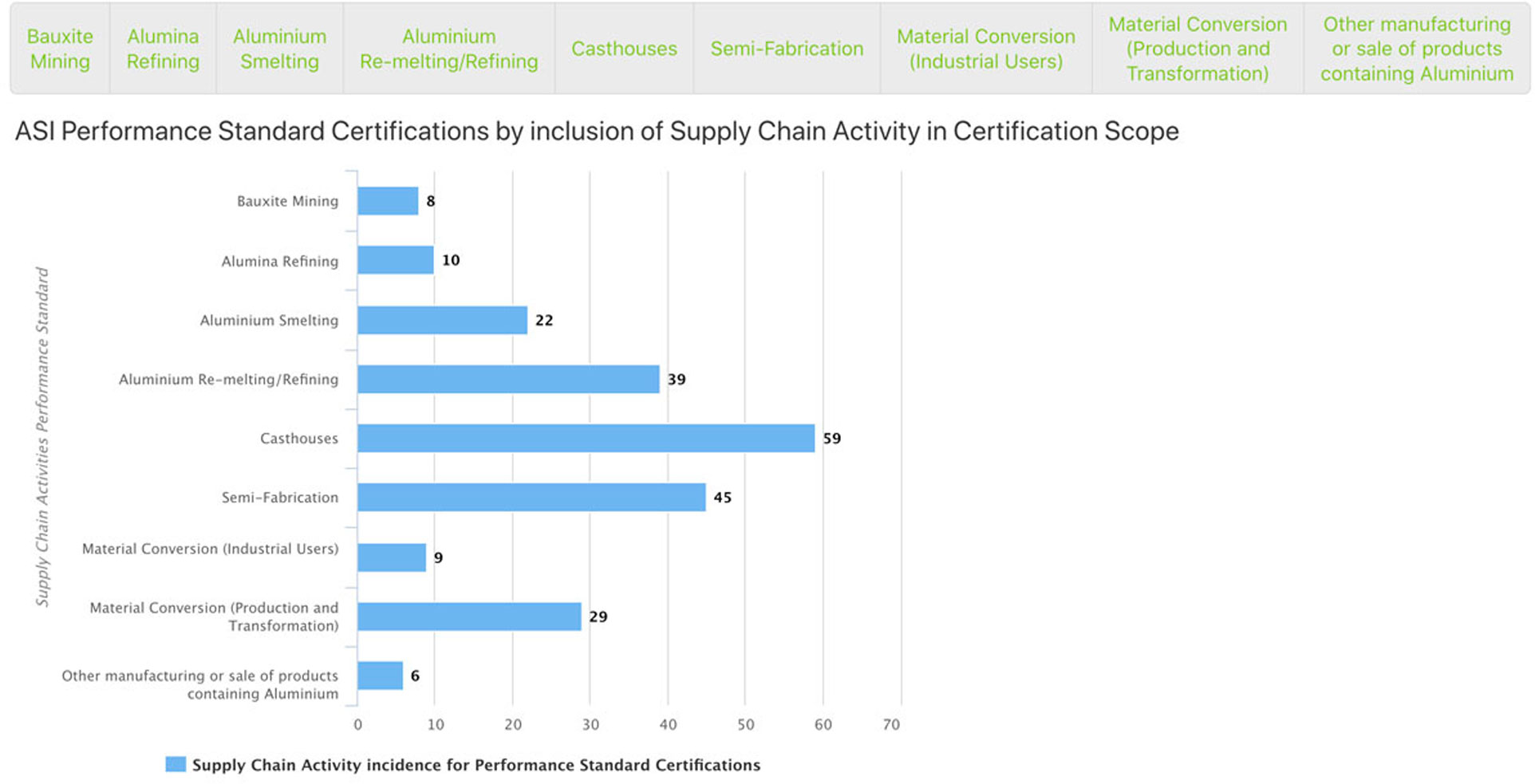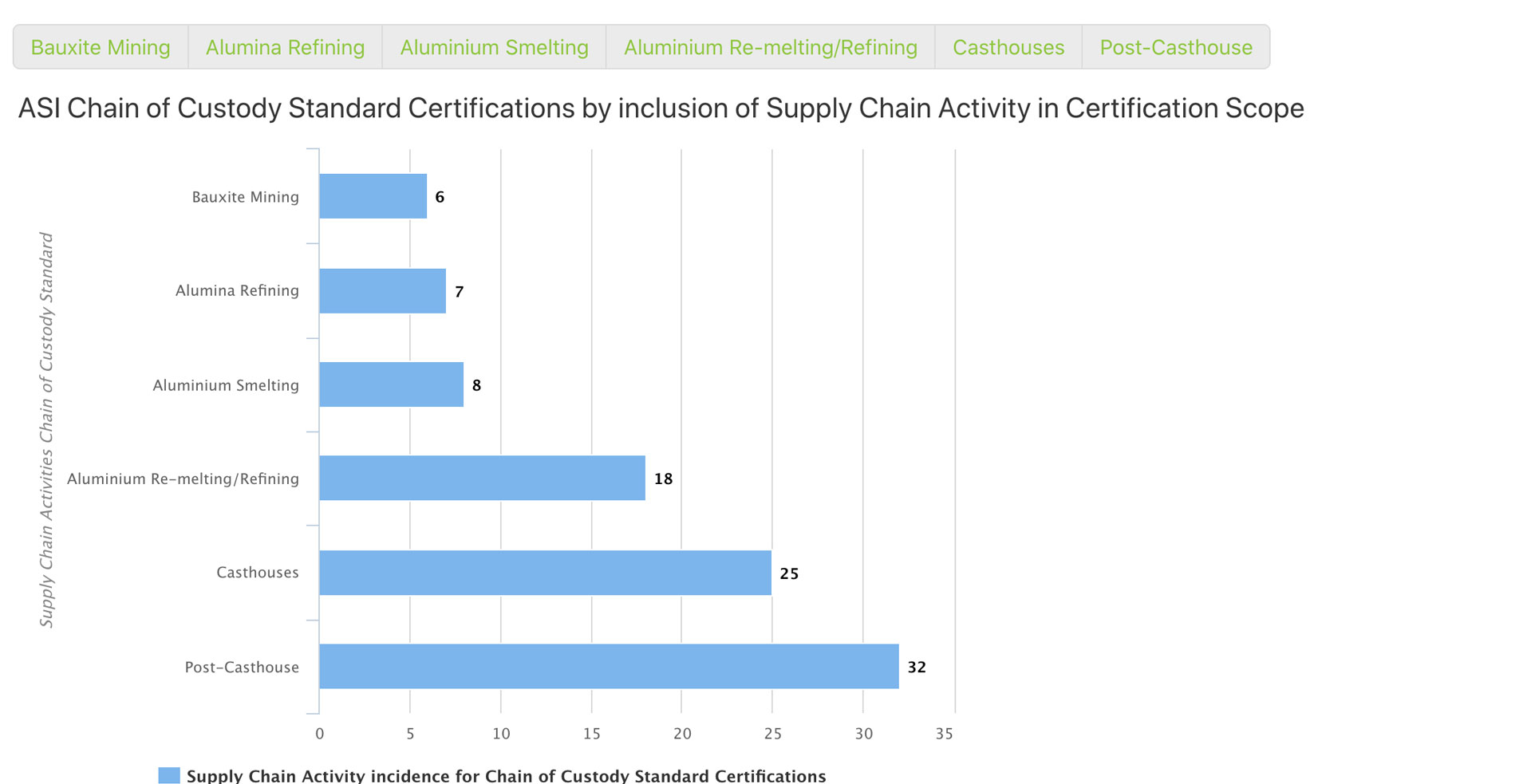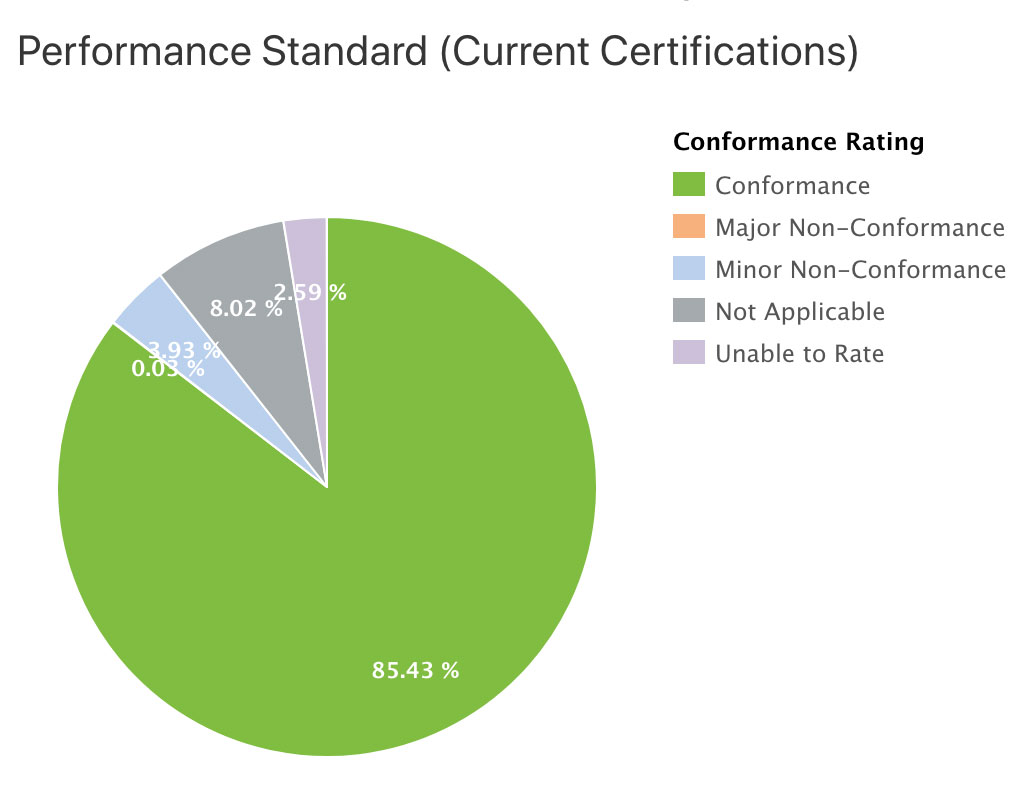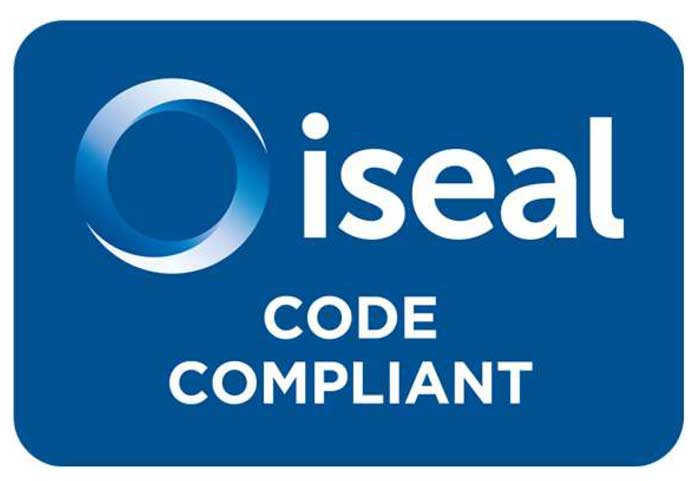 M&E Insights, September 2021
M&E Insights, September 2021
With the new ASI Public Dashboard launched this month, ASI enables all interested stakeholders simpler access to published and aggregated data on ASI Certifications. The Public Dashboard contains live data, so when a new Certification has been added, it will appear in the Dashboard immediately. This month we have prepared some examples to illustrate how you can use the Public Dashboard to gain insights into the ASI Certification Program.

The first step is to create an account on the Public Dashboard. Go to the Public Dashboard page, click ‘Sign up’ and complete the registration form. A confirmation email with instructions on how to log in for the first time will be sent to your email address.
We have prepared a short overview video that demonstrates the basics.
Once logged in, the front page of the Dashboard shows the total of ASI Certifications by Standard:
From there, you will find tabs that can drill down into the data for:
- Performance Standard Certifications
- Chain of Custody Certifications
- Both
Within those, you can access records and charts for live data according to different variables, including:
- Supply Chain Activity
- Country
- Principle and Criteria
- Conformance Rating
- Current or all Certifications
You can also conduct your own searches for keywords on issues or entities of interest. Click ‘Export’ to download data for further analysis under a Creative Commons licence, which includes a requirement for attribution to ASI.














